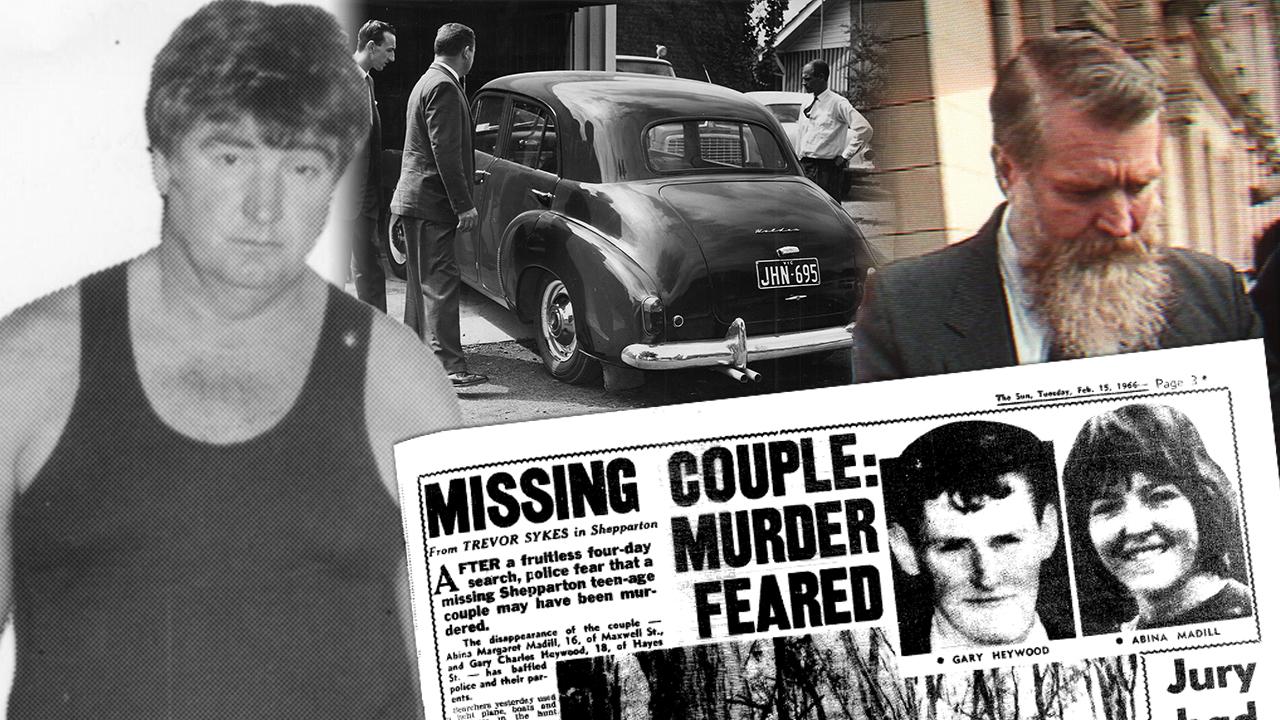Andrew Rule: Fallen Diggers forever entwined as Brothers in Arms
They embarked on an adventure into living hell but stuck together until the end. Now two brothers from rural Queensland will be immortalised at the haunting battlefields of the Great War.
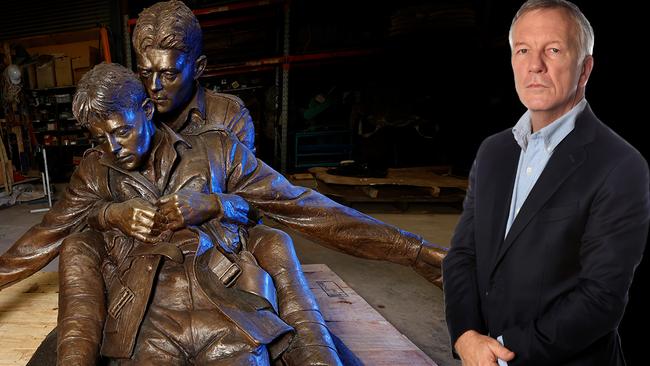
Andrew Rule
Don't miss out on the headlines from Andrew Rule. Followed categories will be added to My News.
The Great War did not end all wars, just millions of lives. And for every life torn apart on the battlefield, more were shattered by injury or the everlasting effects of horrors beyond human endurance.
Thousands of Australian families had more than one son go to the war, sometimes multiple brothers, some even lost fathers and their sons.
Some family members enlisted in pairs, or groups, in the touchingly unlikely hope that they could look after each other.
That’s how it was for Jack and Jim Hunter, farm boys from rural Queensland. They were inseparable as children, big brothers in a family of seven children whose mother Emily had died in childbirth in 1909.
In 1916, Jack and Jim’s father didn’t want them to enlist. By then, the casualty lists were getting longer and every district was starting to lose sons, brothers and husbands.
But Jim Hunter, 25, wanted to serve God, King and Country — and pined to see the world, as well as save it. Beneath the patriotism was a sense of adventure. Beneath that, unspoken but potent, was the fear of being thought a coward or a shirker.
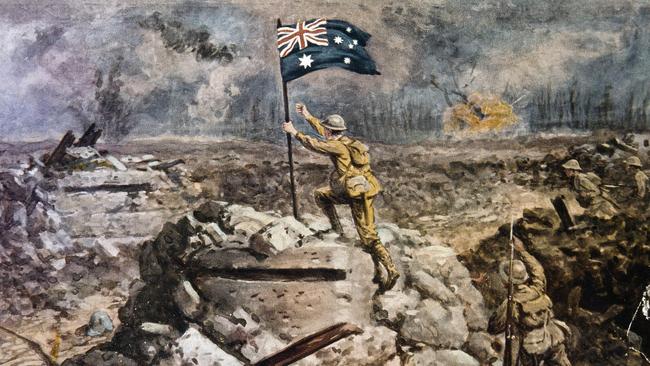
Jim’s big brother Jack had a sweetheart he wanted to marry and knew his father relied on him to help run their farm and contracting business. He didn’t want to go to war but when Jim enlisted, two days later Jack decided he should go, too. They left the farm at Nanango, near Kingaroy, in late 1916.
In his innocence, and out of love for Jim and their father, Jack made the same empty promise that thousands of others made to their parents: he’d go to look after his brother and make sure both got home safely.
As if.
As if they were going to boarding school or to join a football team. As if they weren’t going to face bullets and bombs and carnage on a scale never seen in history.
So they went. And, sure enough, it was a lovely adventure all the way to a living hell. The troopship voyage was fascinating to bushmen whose world had been rare visits to Brisbane. Training in the English countryside had storybook appeal for lads brought up reading British storybooks.
But the western front they reached in August 1917 was trench deep in mud and blood, the misery and death of countless men and animals. The Hunters were in the 4th Division, which fought beside fellow Australians and Kiwis in the Battle of Polygon Wood at Passchendaele, where 43,300 Anzacs were killed and wounded.
Jim had to watch brother Jack mask his nerves on the morning of September 26, when an officer ordered him “over the top” into no man’s land to move a piece of shiny tin that was flashing in the eyes of Allied soldiers as they aimed.
It seems a flimsy reason to face death, this errand. You’d wonder, a century later, whether the troublesome piece of tin could have been shot repeatedly to obliterate it, instead. Better to waste ammunition than risk a young man’s life, you’d think.
But Jack Hunter had to follow orders, no matter how suicidal. His generation obeyed the spirit of Tennyson’s chilling line: “Ours is not the reason why, ours but to do or die”.
He climbed over the parapet and darted across no man’s land. Jim watched and waited, fearing his brother could die for nothing but a trifling advantage in a military stalemate over a patch of territory not much bigger than a Queensland back paddock.
While Jim watched and waited, he heard a mortar explode. Jack stumbled back into the trench, riddled with shrapnel.
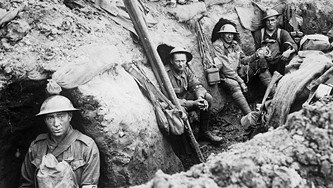
Jim cradled him in his arms, the person he loved most in the world. He dragged him back from the lines towards a medical post but nothing could save his brother.
There were several other dead men in the same spot. The battle was raging. The living quickly dug a wide, shallow grave for the dead. Jim, heartbroken but practical and methodical, wanted something better for Jack than to toss him a muddy hole like a dead animal.
He crossed Jack’s hands across his chest, tenderly wrapped his body in a thick, rubber groundsheet, tied it neatly with signal wire.
When the other corpses were put in the grave, Jim put Jack slightly apart with his head pointing in the opposite direction. He was trying to find some dignity and order in the chaos — but also making a point of difference so he could more easily identify the body.
He looked around to take his bearings so he could find the site after the war. It was near a bend in the road near the village of Westhoek. His promise to his dead brother, and to his father, was that he’d come back for Jack’s body and take him home to Queensland to be buried with their mother.
The war ended. Five months after Armistice Day, Jim returned to Flanders to fulfil his promise. But he couldn’t find the bend in the road. He could not know it had been rebuilt on a different line — with the new road passing straight over the grave of Jack and the others.
Shattered, Jim went back to Australia, wounded in body and spirit. He was nursed to health in the local hospital. His favourite nurse was Esme Butler, a tiny woman who liked animals and children. She married Jim and they had six children, making up for the ones Jack never had.
Jim Hunter, like thousands of “returned men”, never really got over the war.
All his life, he kept the photograph of he and Jack in uniform, taken before they sailed for Europe on that far-off summer day in 1917.
Towards the end, in 1977, Jim’s mind wandered. Before he died at 85, he would call out in distress: “Where is Jack? Where is Jack?”
There it is, just another sad war story, one of too many. But this one doesn’t end with Jim Hunter’s death …
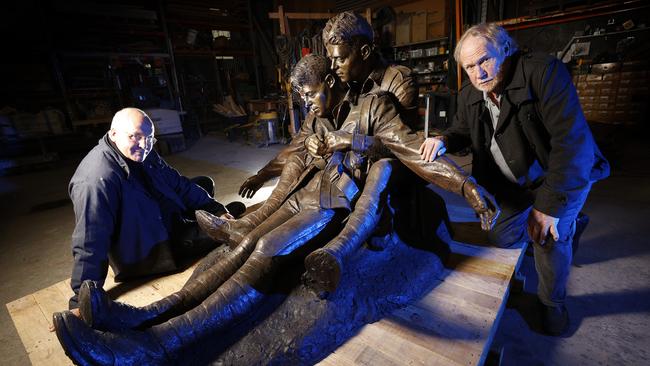
It’s 2006. One day in September, Johan Vandewalle is working in his cafe and military museum, Anzac Rest, at Polygon Wood in the Zonnebeke district in Flanders, when he gets a call.
It is a construction manager whose crew is digging a trench under a road just outside Westhoek. He tells Vandewalle the backhoe has uncovered human remains and that he’d better hurry because they don’t want to delay the job.
Vandewalle rushes to the site, hoping to prevent any damage to the skeletons. He is used to this. A builder by trade, he is an amateur archaeologist and war historian by preference. He has grown up in the Flanders battlefields, fascinated by the Great War, and is an expert on tunnelling and trench warfare.
He knows immediately the five bodies are Australian. He urges the workers to be gentle. “Don’t kill the soldiers again,” he says, fighting for time to retrieve the remains intact.
The Zonnebeke Five are numbered and carefully moved. Experts narrow the possible identities from thousands to dozens, then DNA tests comparing samples from the bones with relatives of soldiers killed in action in late 1917 identifies three of them.
One is George Calder. Another is George Storey. And body number five is Jack Hunter. It is preserved better than the others because of being wrapped in a groundsheet. And it is pointing the reverse way.
Identifying Jack through the DNA of his niece Molly Millis brings out the story of the brothers who went to war. It is one story among thousands but, to Johan Vandewalle and a dedicated group of Australians inspired by the Hunter brothers’ bond, it represents all the families who sent multiple members to war.

That is the short version of the birth of the Brothers In Arms project to set up a commemorative park in woodland in Zonnebeke, centre of the appalling battles of 1917.
Nothing happens fast or easily where governments and bureaucracies are involved, let alone when they duck for cover. By 2015 Vandewalle and his friends had finished plans for the centrepiece of the proposed park.
They proposed a bronze statue of Jim Hunter cradling the dying Jack in his arms.
An artist finished sketches based on the family’s photographs of how the Hunter brothers looked when they joined up in 1916. The project’s supporters knew it would take time but especially money to create a life-size statue.
At first, they aimed to erect the statue to mark the centenary of the Polygon Wood battle in 2017, but that deadline died in the face of official indifference.
They fought on, raising funds as they went to pay progress instalments to Melbourne sculptor Louis Laumen, well experienced in creating bronze statues. They struck a price of seven instalments of $27,000 each to cover the process, starting with scale models through to casting the final statue in the Fundere fine art foundry in Sunshine, then perfecting the detail with foundry expert Jason Waterhouse.
It takes a village to raise a child — and to raise a statue in a far-away Flemish village.
A key player, enthused by Johan Vandewalle’s concept, is Craig Hunt, a Melbourne finance executive. And there’s Kellie Dadds, a retired army officer who has built a registry of more than 5000 Australian families who sent two or more members to war.
Jim Hunter’s descendants are behind the project. One of his granddaughters, Janice Eldridge of Essendon, is disappointed that the Australian government — even the Australian War Memorial — has snubbed the Brothers In Arms project. She wonders if it’s because the idea was born outside the Canberra bubble.

Still, they were confident they could raise the funds to meet the costs — right up until the pandemic froze all public gatherings early last year. That’s when the project stalled and looked like dying.
Enter Bill Gibbins, Melbourne businessman turned philanthropist. He is dedicated to Anzac causes.
This is the man who bought the Rats of Tobruk meeting hall in Albert Park in 2007 and gave the veterans’ families use of it as long as they wanted.
This is the man so inspired by the story of the Australian warhorse “Bill the Bastard” (who carried five Australian light horsemen away from death in the Battle of Romani in 1916) that he supported the erection of a statue of the horse and riders in New South Wales.
Above all, Gibbins is the man who stepped up to create the annual Jericho Cup race meeting at Warrnambool, beginning in 2018. The fourth Jericho Cup, run over a marathon 4600m, will be run next Sunday.
By then, thanks to Bill Gibbins’ generosity, the completed statue of Jim and Jack Hunter will be well on its way to its permanent place in Flanders fields. There it will be the centrepiece of a memorial where thousands of pilgrims will be moved by it when they visit the haunting battlefields of the Great War.
Nearby will be moving lyrics from Mark Knopfler’s song, Brothers In Arms.
The song says in part:
“In the fear and alarm,
You did not desert me …”
Which would make a fine epitaph for the Hunter brothers and thousands like them.
Lest we forget.




